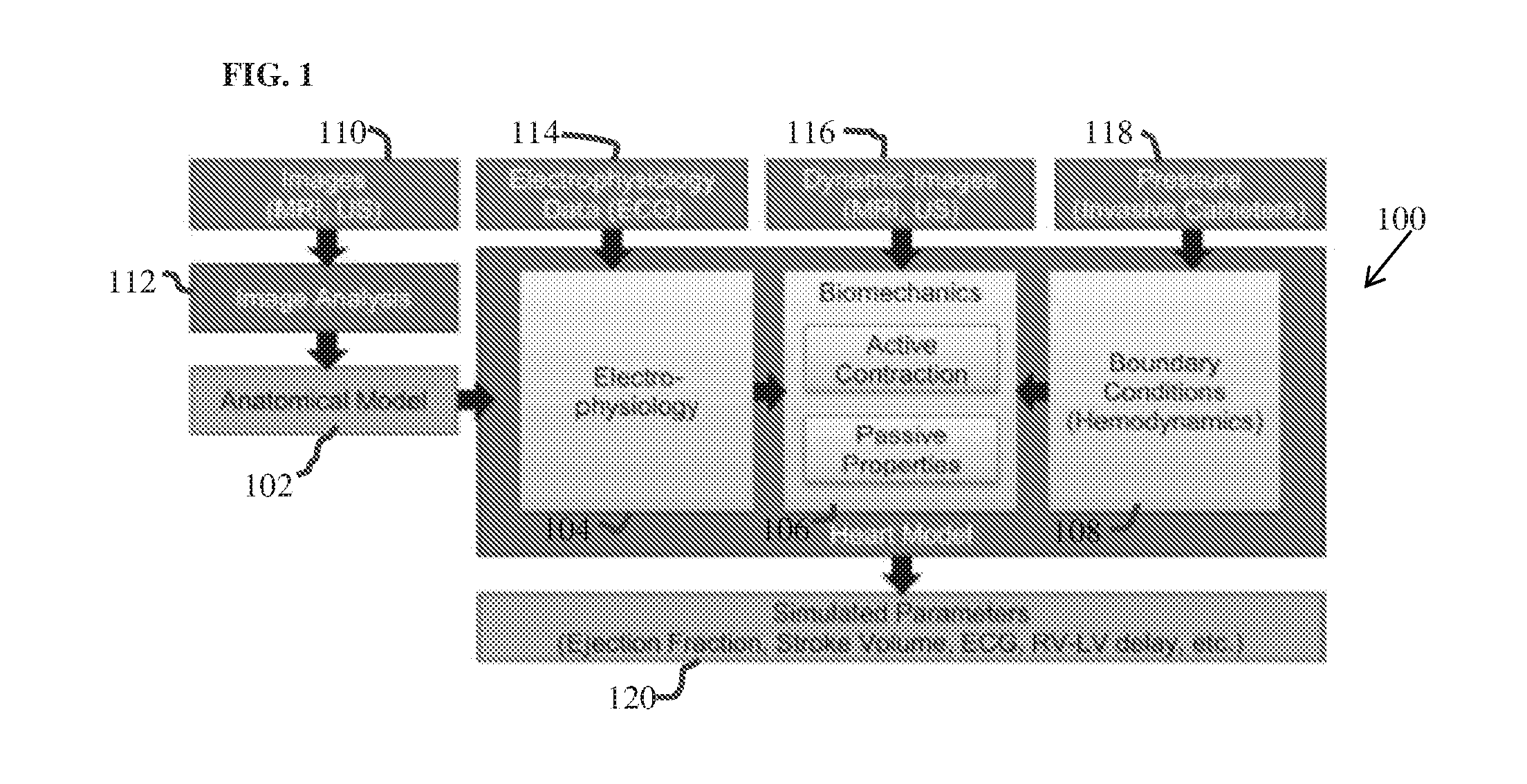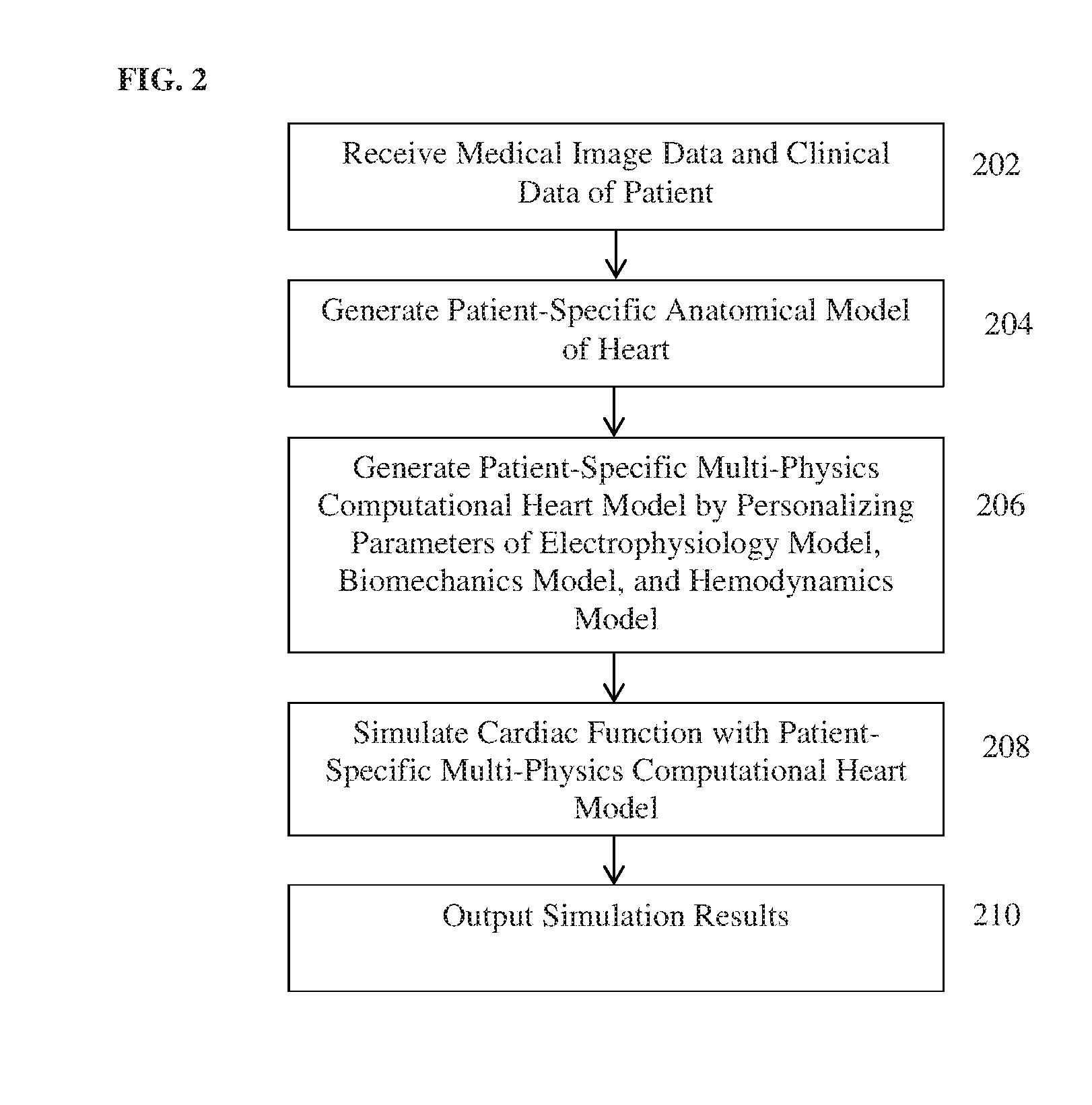Systems and methods for estimating physiological heart measurements from medical images and clinical data
a physiological heart and image technology, applied in the field of physiological heart measurements estimation to personalize a multiphysics heart model for a patient, can solve the problems of cardiovascular disease with significant mortality and morbidity rates, major threat to public health, and difficult diagnosis or treatment, and achieve the effect of fast generation
- Summary
- Abstract
- Description
- Claims
- Application Information
AI Technical Summary
Benefits of technology
Problems solved by technology
Method used
Image
Examples
first embodiment
[0042]In the present invention, the patient-specific multi-physics computational model is personalized (step 206 of FIG. 2) by solving for parameters of the forward model for each model component (hemodynamics, EP, and biomechanics) directly based on the medical image data and / or clinical data of the patient using inverse problem algorithms. FIG. 5 illustrates a method for personalizing the parameters of the patient-specific multi-physics computational model according to an embodiment of the present invention. The method illustrated in FIG. 5 utilizes inverse problem algorithms to personalize parameters of the cardiac hemodynamics model, the cardiac EP model, and the cardiac biomechanics model. Referring to FIG. 5, at step 510, the patient-specific anatomical model is generated using robust machine learning and mesh processing based on a clinical 3D image of the heart and a rule-based fiber architecture. The details of generating the patient-specific anatomical model are described a...
second embodiment
[0057]In the present invention, the patient-specific multi-physics computational model is personalized (step 206 of FIG. 2) using statistical machine-learning based techniques to directly estimate patient parameters from clinical observation based on the medical images and clinical data of the patient. Instead of using inverse problem algorithms to estimate the parameters based on a number of forward simulations, this embodiment utilizes a trained statistical model (e.g., regression function) learned from a database of training samples to estimate the parameters of the patient-specific multi-physics computational model from features extracted from the medical image data and clinical data of the patient.
[0058]The forward model described in the embodiment of FIG. 5 can be seen as a dynamic system y=f(è), where the system output y is the dynamic anatomy (volumetric representation of the myocardium deformed over time), cardiac electrophysiology, electrocardiogram and hemodynamics parame...
PUM
 Login to View More
Login to View More Abstract
Description
Claims
Application Information
 Login to View More
Login to View More - R&D
- Intellectual Property
- Life Sciences
- Materials
- Tech Scout
- Unparalleled Data Quality
- Higher Quality Content
- 60% Fewer Hallucinations
Browse by: Latest US Patents, China's latest patents, Technical Efficacy Thesaurus, Application Domain, Technology Topic, Popular Technical Reports.
© 2025 PatSnap. All rights reserved.Legal|Privacy policy|Modern Slavery Act Transparency Statement|Sitemap|About US| Contact US: help@patsnap.com



